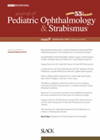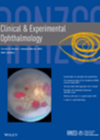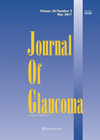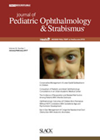You searched for "imaging"
Using modified staging criteria to determine optic nerve invasion in retinoblastoma
This paper reports the use of a modified staging criteria for optic nerve invasion in extraocular retinoblastoma and its correlation with treatment outcomes in 21 patients. The average age at presentation was 41 months (7–120) and there were 14 unilateral...Clinical and anatomical differences for heavy eye syndrome, highly myopic sagging eye syndrome, and sagging eye syndrome
The authors explored the mechanisms underlying the development of heavy eye syndrome (HES), highly myopic sagging eye syndrome (SES)-like, and SES with the aim to differentiate the three conditions clinically and anatomically to aid treatment decision-making. This was a retrospective...A day in the life of...an ophthalmic imager / an orthoptic assistant
1 February 2014
| Richard Hancock, Anne Fifield
The ophthalmic imager My role as an ophthalmic / medical photographer has evolved, dramatically, since I began my career at Manchester Royal Eye Hospital, 30 years ago. Long gone are the days of developing and hand printing fluorescein angiograms in...
Optos announces new ultra-widefield colour image modality, providing additional retinal visualisation to eyecare professionals
Optos, Plc, the leading retinal imaging company, announces it is expanding the optomap® ultra-widefield (UWF™) retinal imaging modalities available with the California FA device to further assist eyecare professionals in disease management and treatment planning.Retinal structural features of CMV retinitis
1 October 2016
| Anjali Gupta
|
EYE - Vitreo-Retinal
Confocal adaptive optics (AO) technology has enabled cellular level retinal imaging, including imaging of photoreceptors and blood flow. Adaptive optics scanning laser ophthalmoscopy (AOSLO) is a technology that provides high resolution and high contrast retinal images by correcting ocular aberrations....
Near-infrared autofluorescence to diagnose retinal laser injuries
2 December 2019
| Tasmin Berman
|
EYE - Vitreo-Retinal
This retrospective observational case series aimed to assess whether near infrared autofluorescence (NIR-AR) imaging is a useful imaging modality in the diagnosis of hand-held laser retinal injuries. Twelve patients from two centres underwent ophthalmic assessment and retinal imaging including fundus...
Comparison of bleb grading and IOPs
1 October 2018
| Chrysostomos D Dimitriou
|
EYE - Glaucoma
The purpose of this study was to compare a novel anterior segment optical coherence tomography (AS-OCT) bleb grading system with a clinical bleb grading system (Moorfields) and both with intraocular pressure (IOP) levels following trabeculectomy surgery. The authors developed a...
Part 2: Good news, bad news at the international conference
2 August 2024
| Peter Cackett
|
EYE - General
In the second instalment of this two-part article (click here for Part 1), our editor Peter Cackett presents the ‘good news’ and ‘bad news’ from an international conference experience. Readers will remember that in the last issue I left you...
Rectus muscle flap tear
The clinical findings, role of imaging, surgical techniques and results are described for three patients who presented with flap tears of the inferior or medial rectus muscles. Two were due to trauma (inferior rectus) and one due to surgery (medial...Optical coherence tomography – reinventing the eye examination
It has been 25 years since Huang et al. presented the first optical coherence tomography (OCT) images in Science [1]. With vast improvements in OCT technology over the years, it is now possible to acquire high-resolution cross-sectional images of the...OCTA in angioid streaks
1 February 2019
| Saruban Pasu
|
EYE - Vitreo-Retinal
This paper reports on the optical coherence tomography angiography (OCTA) features of choroidal neovascularisation (CNV) secondary to angioid streaks and the ability to predict CNV activity. A total of 38 eyes of 19 patients were included in the study. Thirty...
Eye Surgeons of the Future
5 August 2022
Who and where are the eye surgeons of the year 2040? Chien Wong reports from a London school's Careers Fair.










